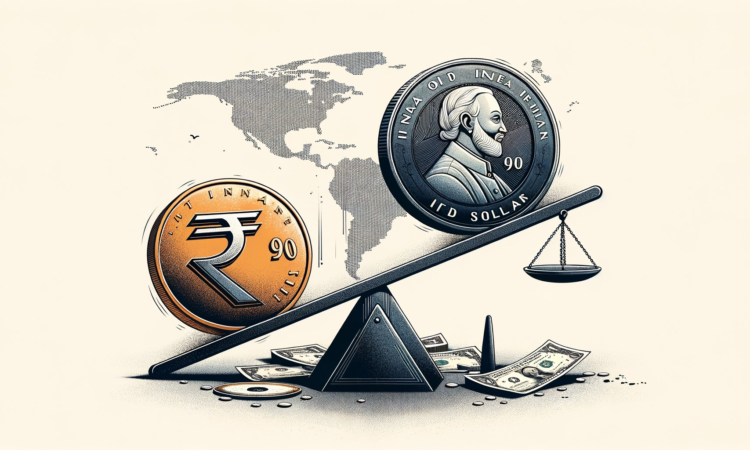
What’s going on here?
The Indian rupee ended its three-session winning streak on June 26, 2024, closing at 83.5700 to the US dollar, down from 83.4325 the previous session.
What does this mean?
The recent slip of the Indian rupee can be attributed to several factors, primarily the weakness of other Asian currencies. Notably, the Chinese yuan fell below the 7.29 mark against the dollar, dragging regional currencies down by at least 0.1% on average. Additionally, the month-end dollar demand from importers played a significant role in the rupee’s depreciation. Interestingly, a public sector bank’s dollar sales prevented the rupee from breaking below the 83.60 level, though it’s not clear if this was on behalf of the central bank. Meanwhile, the strengthening US dollar—spurred by Fed Governor Michelle Bowman’s comments on the need to maintain steady policy rates—added to the rupee’s pressures.
Why should I care?
For markets: Rupee’s resilience tested.
The Indian rupee’s recent slip highlights ongoing market volatility and the complex interplay of global and regional factors. Investors and traders should watch the rupee’s movements closely, especially with the upcoming US personal consumption expenditures (PCE) price index report, which could offer more clues about potential Fed interest rate cuts. Expect the rupee to trade within the range of 83.00-83.70, with significant breakouts potentially moving the currency by 50-80 paisa.
The bigger picture: Global currency dynamics in play.
The weakness in the rupee amid broader Asian currency struggles underlines the interconnectedness of global financial markets. With the Chinese yuan and other regional currencies weakening, it reflects broader economic challenges and investor sentiment. However, the upcoming inclusion of India in the JPMorgan emerging market debt index on June 28 is anticipated to bring dollar inflows, providing a cushion against severe rupee depreciation. Financial analysts believe these inflows could help maintain the rupee above the critical 83.70 mark, offering some stability amid global currency fluctuations.

